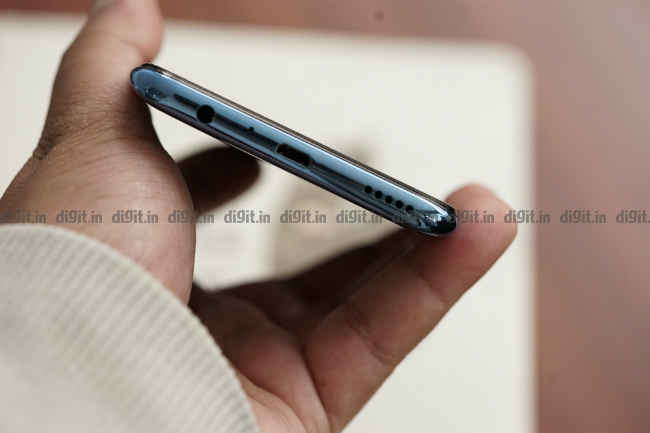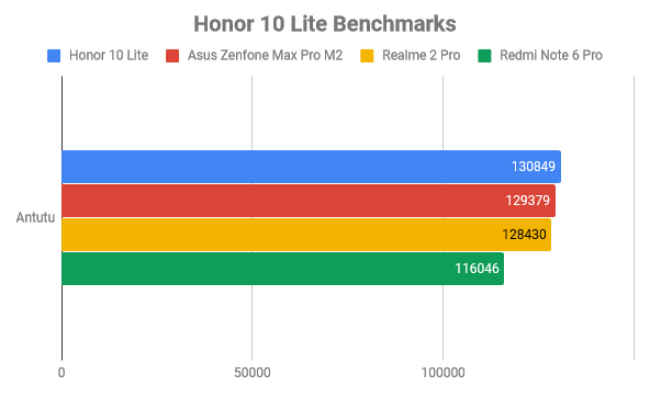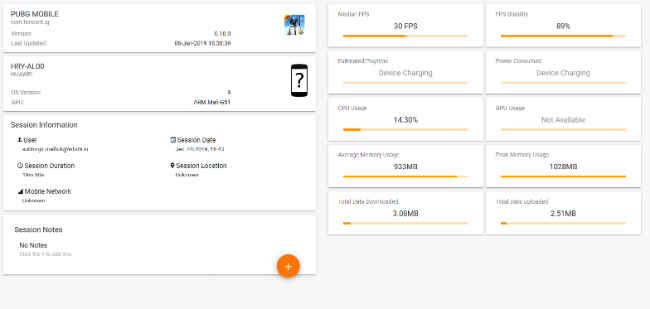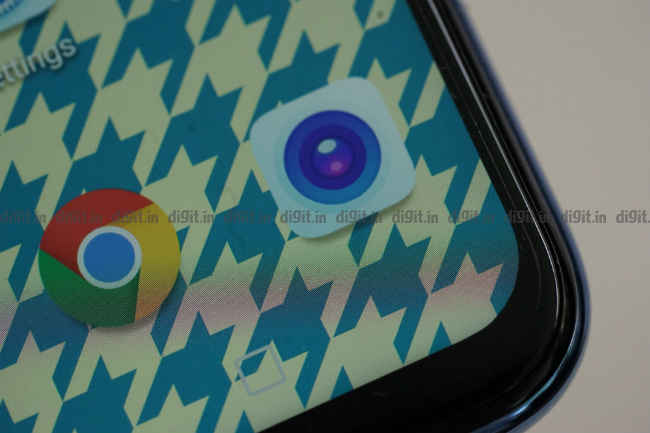Huawei Honor 10 Lite detailed review
After launching a series of smartphones ranging from the high-end to entry-level price range, Honor has more or less consolidated its lineup in 2018. The blitzkreig also proved to be profitable for the company as it broke into the top 5 smartphone manufacturers in India according to reports. It’s only obvious that the Huawei sub-brand is now looking to maintain the momentum it gathered last year. The Honor 10 Lite is a way to keep that momentum alive. With a large display, a new processor and a colourful finish, the Honor 10 Lite looks to emulate the success the Honor 9 Lite received at the beginning of 2018. However, because of the mid-range elements in the phone, the phone is priced much higher than its predecessor going all the way up to Rs 17,999. One might argue that the average selling price in the Indian smartphone market has also increased (thanks mostly to the success of high-end devices like OnePlus 6), and as such, the price is more or less acceptable, but with Rs 17,999 to spare, is the Honor 10 Lite the best phone to buy right now? Let’s find out.
[embed]https://www.youtube.com/watch?v=2kYiJk7k0j8[/embed]
Design
The Honor 10 Lite looks much like other Honor phones. It has a similar colour treatment with a glossy, reflective exterior. Only, instead of the usual glass panel on the back, the chassis is made out of hard plastic. The company promises high durability, but I wasn’t convinced. Just like the Asus Zenfone Max Pro M2, it gets scratched easily. It also tends to retain more smudges and fingerprints. I had to keep a microfibre cloth with me at all times to keep the phone spotless. You do get a TPU case out of the box but using that takes away the charm of the glossy finish.

The phone also curves at the edges making it easy to grip. Honor anyway likes to maintain a slim profile and the Honor 10 Lite is quite slim at 8mm. It’s not as wide as the Honor 8X even though the company relies on the same Chip-On-Flex (COF) technology to keep the size of the bezels at the bare minimum. As a result, Honor was able to achieve an impressive 91 percent screen-to-body ratio. With a tiny U-shaped notch housing the front camera, the upper part of the display is also void of much distraction. Between the wide rectangular notch and this one, I prefer the latter simply because it takes up much less space. Since the company did away with a wide notch, all the other elements like the LED notification light and the proximity sensor had to be fitted at the bottom.
The biggest quip I have about the Honor 10 Lite is that it still relies on a microUSB port for charging and data transfer. The port is wedged between the 3.5mm headphone jack (thankfully retained) and the speaker grill, and doesn’t support the company’s SuperCharge speeds. I believe it’s now time for the microUSB to retire and make way for USB-C universally.

Nevertheless, the Honor 10 looks good, but I won’t go as far as saying it’s well-built. Plastic isn’t quite durable which is the reason OEMs raced to use aluminium and ceramic and even titanium to make them long-lasting. I would still say it’s better than using glass as it makes the phone less fragile and also allows the space to experiment with various colour treatments. The Honor 10 Lite has a 3D optical effect that takes a lot of effort to accomplish, according to Honor, and while that’s not a new look anymore, it does add a bit of flair to the phone.
Display
The display on the Honor 10 Lite is one of the highlights of the phone. The 6.21-inch panel stretches almost all the way to the edges thanks to the CoF technique Honor pulled off. The waterdrop notch on top also allows for more screen real estate. Honor uses a similar LCD panel as the Honor 8X which we had noted to be quite bright. Even the Honor 10 Lite registered high brightness values in our luminescence tests. As such, content on the 19.5:9 aspect ratio display looks good particularly thanks to a high 415 ppi pixel density. The icons appear quite sharp and bright wallpapers appear rich and vibrant. However, the phone lacks the Widevine L1 certification, so even if the display makes HD content appear rich and colourful, you won’t get the same quality while streaming on Netflix, Amazon Prime Video and the likes.

The panel also seems to have its white balance set to a cooler bias rather than the neutral white we normally expect from IPS LCD panels.. The blues and greens appear more saturated while the reds and yellows seem a little washed out. The display is especially good for gaming though. The borderless panel immerses you in the game and the extra real estate comes handy when you have large hands.
Performance

While it’s nice to have a bright and vibrant display and a cool design, the performance will always be the most essential aspect of a smartphone. If it fails to perform, everything else becomes secondary, and the Honor 10 Lite doesn’t quite disappoint. It relies on the HiSilicon Kirin 710, the same chipset that power the Honor 8X. For anyone wondering, the Honor 8X was the runner-up in the mid-range segment in our Zero1 awards where only the performance matters. The Kirin 710 is based on a 12nm manufacturing process and features four high-performance Cortex A73 cores clocked at 2.2GHz and four high-efficiency Cortex A53 cores clocked at 1.7GHz. While ARM has released new core architectures, the older Cortex A73 cores work quite well. In fact, as compared to the older Kirin 659 where all the eight cores were high-efficiency Cortex A53, the Kirin 710 is quite a performance jump. It reflects in the benchmark results as well. In fact, the Kirin 710 managed to trump Qualcomm’s best mid-range chip in that price range — The Snapdragon 660.


On AnTuTu, the Honor 10 Lite scored 130849, which is similar to the Honor 8X’s 139785 and more than the Mi A2’s 128895. While on Geekbench Single and Multi core tests, the Kirin 710 showed promise by scoring 1541 and 5427 respectively. In comparison, the Honor 8X also scored similarly with 1602 and 5435 respectively while the Mi A2 scored higher in single core performance at 1602 and more or less the same in the multi-core test at 1632. While Geekbench and AnTuTu measures how well the CPU holds up, 3DMark’s Slingshot measures graphics processing and that’s where the Honor 10 Lite seems to be a little weak. It scored a measly 731 while the Mi A2 outperformed by scoring 1767. Even the Honor 8X had the same weakness, and that’s particularly because the Kirin 710 is paired with an older Mali-G51 GPU and is no match for the Adreno GPUs.

Nevertheless, Honor compensates for that with the software-based GPU Turbo 2.0. It uses machine learning to render only parts of the frame that change over time, and as such cuts down on the processing power required. The impact is big while playing certain games like PubG Mobile. Gamebench revealed that the popular battle royale game (PubG) ran at 30 FPS while the same game on the Asus Zenfone Max Pro M2 ran at 26 FPS. Both are much lower than what the high-end smartphones deliver, but that’s as far as you can go with a mid-ranger it seems. GPU Turbo also supports Asphalt 9 and other popular Chinese games.

The Honor 10 Lite runs on Android 9 Pie and is the first Honor phone to come with the latest version out of the box. The new EMUI 9, based on the latest version of Android, brings new features like gesture-based navigation, digital well-being and more. The gestures are very iPhone-like, and takes a little time to get used to. You do get a little extra screen space by removing the navigation buttons. I was more interested in the Digital Balance feature which gave me a quick rundown of where my time went while on the phone. You can also set a stipulated amount of time to use the phone, and is especially useful if you’re giving a phone to your kid. There’s Huawei’s HiVision too which can be used to recognise dresses and famous objects. It did work in some cases but also failed quite a lot of times. It seems like a work in development, and as such, Honor could have just enabled support for Google Lens. Interestingly, the Honor 10 Lite can also project it’s display wirelessly to any miracast supported device. It’s not exactly a new feature, but you can use the phone as it is, while projecting a video to a screen, like how you would use Chromecast to cast content.
Everything said and done, even though the Honor 10 Lite is packed with useful features, the UI itself still has the same unaesthetic feel to it. It’s not as refined and seamless as say, MIUI. It does not have the simplicity of stock Android either. It’s weird to see Honor putting so much effort to make the exterior stand out, but the phone’s software experience still has a long way to go.
Camera

Throughout 2018, we saw mid-range smartphone cameras go from strength to strength and posed quite a challenge to their expensive counterparts. The Mi A2, for instance, managed to shoot better low-light photos than a lot of other high-end offerings. Cameras have been improving over time, and that’s evident in the Honor 10 Lite. The 13+2MP setup on the Honor 10 Lite is above average. There are obvious compromises like lack of OIS or EIS, although Honor offers it’s AI-based stabilisation in the night mode which is a hit or miss.
On the front is a 24MP Sony IMX 576 sensor, the same as the one on the Realme U1. The 24MP sensor bins four pixels into one to generate a better low-light selfie with more details and less noise. Part of that claim is true, but some of it isn’t quite so.
Honor also implemented it’s AI-based scene recognition system that comes into play when you are taking a photo of a common scene. The camera can recognise 22 different scenes, and in most cases, it simply boosts up the local contrast and the saturation to bring out a result that the average smartphone user will find attractive.



The phone manages to take good photos without much effort when there’s ample sunlight. The dynamic range in the final JPEGs is a little less as the shadows retain lesser details. We have seen mid-rangers like the Mi A2 and the Redmi Note 6 Pro take photos with good details in the shadow regions. However, the photos Honor takes are aesthetically pleasing simply because it jacks up the saturation and contrast in the photos.


The camera is especially useful in taking closeup shots of food, flowers and the likes. There, the 13MP sensor with its f/1.8 aperture is able to reproduce finer details and the results look good on a big screen. However, since there is no stabilisation in place, you need to have steady hands to click a photo of say, a flower moving in the wind. You can turn the AI off if you don’t want an oversaturated result.
Indoors, the camera’s somewhat low dynamic range starts becoming more evident. It tends to shoot at slower shutter speeds and because of a lack of stabilisation, even a slow shutter speed of 1/100s shows signs of blurring in the edges. In case of the sample below, the area farthest in the frame is hardly in focus and lacks sharpness. In the next sample below, the dark area have little to no detail. You can experiment with the focus point a bit to get your desired exposure, but there’s a limit to it.

The phone is especially adept at taking portrait photos. Sure it won’t have that gradient bokeh effect the new iPhones produces and the blurring is pretty linear. But the edge detection and subject separation is pretty accurate.
In low-light, the camera falls flat. Shooting in normal Photo mode results in noisy photos, with little to no sharpness. However, the night mode manages to recover some details. It essentially works on the same principle as the OnePlus 6T’s Nightscape mode where the shutter is open for longer and the resulting shake is countered by taking multiple buffer images and fusing them together. The results aren’t as good as the OnePlus 6T though, but good enough for the price it is offered at. Stationery objects are easier to shoot with this mode, as you have to hold the phone up for longer.

Thanks to the pixel-binning efforts, the selfies from the Honor 10 Lite’s 24MP front camera also come out decently well. Sure Honor boosts up the beautifying effects by default but they can be turned off to get a more realistic portrait of people’s faces. It also seemed to work enough in the dark. Apart from binning the pixels together, it also makes the screen bright to use as a source of light. The resulting photos have the background dark and noisy, but the faces are in focus with adequate sharpness.
Battery

The Honor 10 Lite have some traits in common with the Honor 8X - The same chipset and a big display among them, but one place where it crucially deviates is the battery capacity. The 10 Lite packs a smaller 3400mAh battery. The company believes the 12nm chipset will be more power efficient and will compensate for the lower capacity. But that's not totally the case. Especially while gaming, the battery drain is higher than normal. A 30-minute session of PubG Mobile drained the battery from 45 percent to 23 percent. While watching content on Netflix, the drain is more conservative however, perhaps because it's not running at full resolution. On PCMark Work 2.0 though, the phone lasted 5 hours 24 minutes, indicating you won't have to plug the phone in charge before evening. The phone also doesn't seem to support any sort of fast charging and topping the battery takes around 1.5 hours. Clearly this isn't the mid-ranger to buy if you're looking for a really long battery life.
Bottomline
The Honor 10 Lite may have come out earlier in China, but for India, it comes just on time. With Mobile World Congress just a month away, the Honor 10 Lite is filling a critical gap in time before more innovative devices come to market. Mid-range phones have performed impressively over the past year and are set to become even more powerful in 2019. While this smartphone does come with the performance expected from a 2019 mid-range phone, there are certain elements that should have been left behind in the past year itself, such as the microUSB port and the inability to stream videos in HD from Netflix or Amazon Prime Video. However, with an almost borderless screen and above average cameras, it’s easy to recommend the Honor 10 Lite. If you need a phone right now, between the Realme 2 Pro, Mi A2, Redmi Note 6 Pro and the Asus Zenfone Max Pro M2, the Honor 10 Lite is definitely the one to go for. However, in the next few months post MWC, we do expect more exciting mid-range smartphones to be available, so if you can wait, you may better choices a few months down the line.
[ad_2]
Source link

Post a Comment